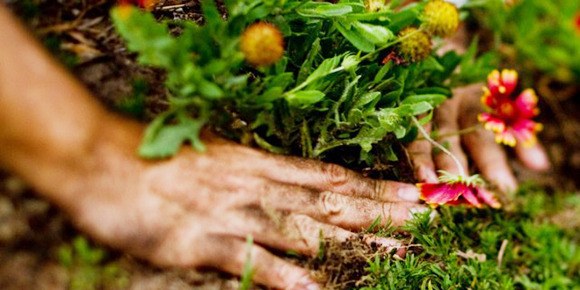Plant Clinics
Helpline: 417-2514
Mondays, 9 a.m.-1 p.m., Clallam County Courthouse, 223 E. Fourth St., Port Angeles
Saturdays, 9 a.m.-1 p.m., Demonstration Garden, 2711 Woodcock Road, Sequim
Brown Bag Seminars
Second and fourth Thursdays, noon, at the Clallam County Courthouse
Aug. 13 — Fire-Proofing Your Landscape, Jon Bugher
Aug. 27 — Native Plants in your Landscape with Amanda Rosenberg, John Norgord
Class Act Seminars
Saturday, 10-11 a.m., Demonstration Garden
Aug. 8 — Growing Blueberries! with Jeanette Stehr-Green
Aug. 22 — Hydrangeas with Marilyn Stewart
Friday Walks in the Garden
Second Friday of each month (May-September), noon-1 p.m., at the Fifth Street Community Garden, 328 E. Fifth St., Port Angeles
Aug. 14, Sept. 11
General garden advice
August is the hottest, driest month of the year; monitor your plants and keep them well watered.
Weed seeds will germinate fast in warm, moist flower and vegetable beds.
Pull weeds while they are small before they go to seed. Compost piles benefit from the heat. Turn and moisten as necessary.
Caring for your ornamental garden
• Annuals — Deadhead plants to keep them blooming through fall. Fertilize plants in containers every two weeks.
• Bulbs, Corms, Rhizomes and Tubers — Divide and replant iris. When cutting lilies for bouquets, leave two-thirds of the stem, as they regenerate their bulbs from the stem.
Fertilize dahlias using a low-nitrogen fertilizer after watering.
Plant fall crocus for late-September bloom.
• Lawns — Mow the lawn and deep water at least once this month. Do not fertilize this month.
• Perennials — Fertilize and water fall-bloomers such as asters and chrysanthemums using a low-nitrogen fertilizer.
Prune roses for a pleasing shape; remove crossing branches and work to open up the center of the plant for good air circulation. Pull off sprouts arising below the graft union (suckers) and remove leaves with black spot; do not compost.
This is the last month for planting roses; be sure to mulch after planting, but do not fertilize. Shear lavender to reshape it after blooming.
• Shrubs and Trees — Do not plant trees and shrubs until fall. Leave them in pots and water regularly.
Avoid extensive pruning since it encourages new growth late in the season; remove dead material and shape lightly. Prune hydrangeas as soon as flowers begin to fade.
Caring for your edible garden:
• Berries — Clean up, fertilize and water June-bearing strawberries after harvest; remove weak, old and crowded plants and narrow rows to 8-12 inches.
Prune out second-year raspberry and blackberry canes (canes that just fruited) after harvest. Trellis first-year canes of trailing blackberries unless you live at a higher elevation. Harvest blueberries 2-3 days after the entire berry turns blue.
• Fruit trees — Apples are ripe when the seeds turn brown; plums, when fruit is slightly soft; pears, when fruit is full-sized but still hard.
• Vegetables — Remove tomato plants that show signs of late blight such as water-soaked spots on leaves, stems or fruit. Remove new flowers on tomatoes and winter squash plants to encourage ripening of mature fruit.
Force tomato plants to put energy into ripening by pruning 4 inches off growing tips of vegetation. If squash and cucumber plants show powdery mildew, cut off affected areas.
Harvest potatoes when the foliage dies back. Harvest garlic when 4-5 leaves are still green. Lift garlic bulbs gently, brush off dirt, cure until shoots and roots are dry (4-6 weeks).
Compiled from contributions by Washington State University certified, Clallam County Master Gardeners.



